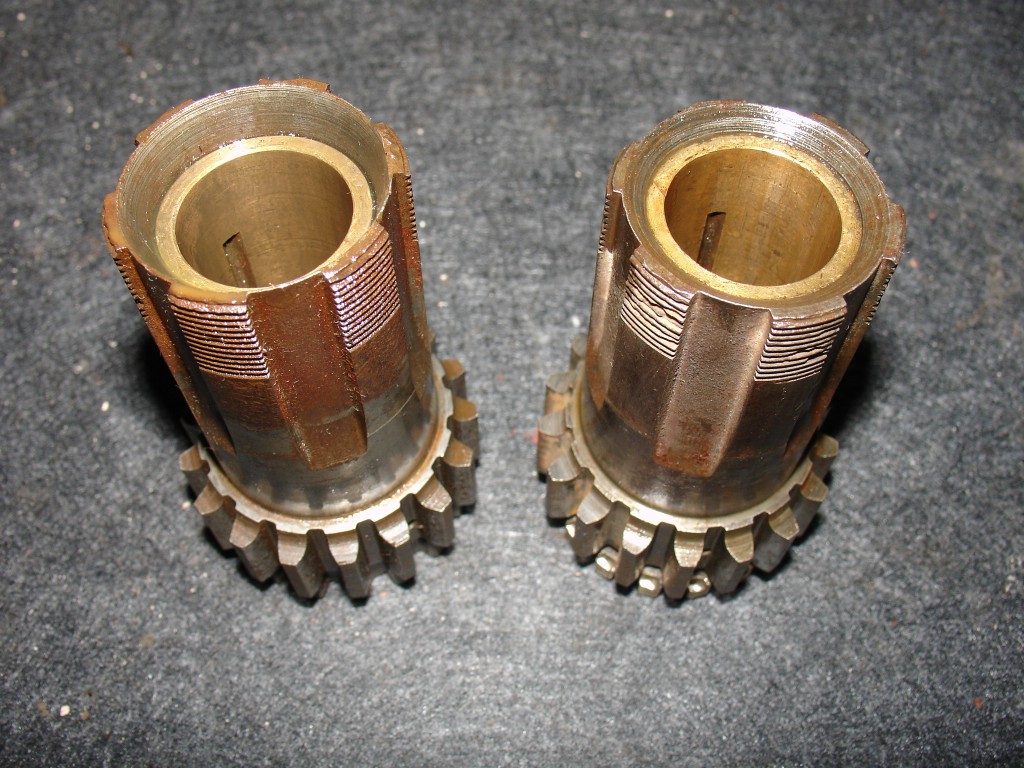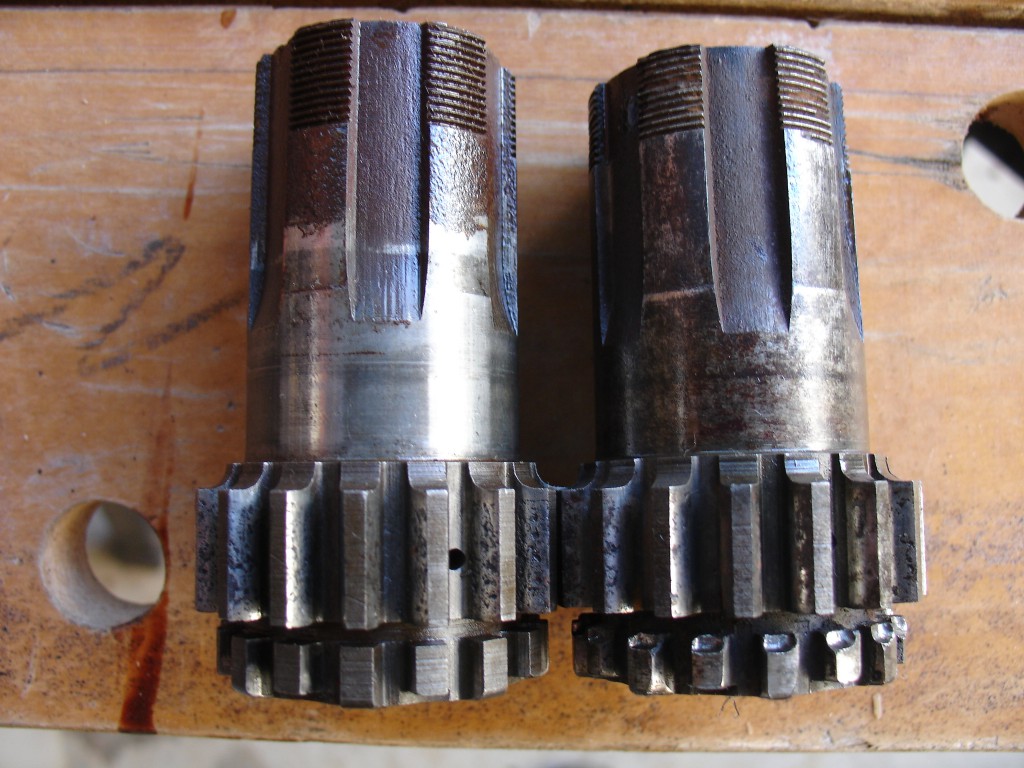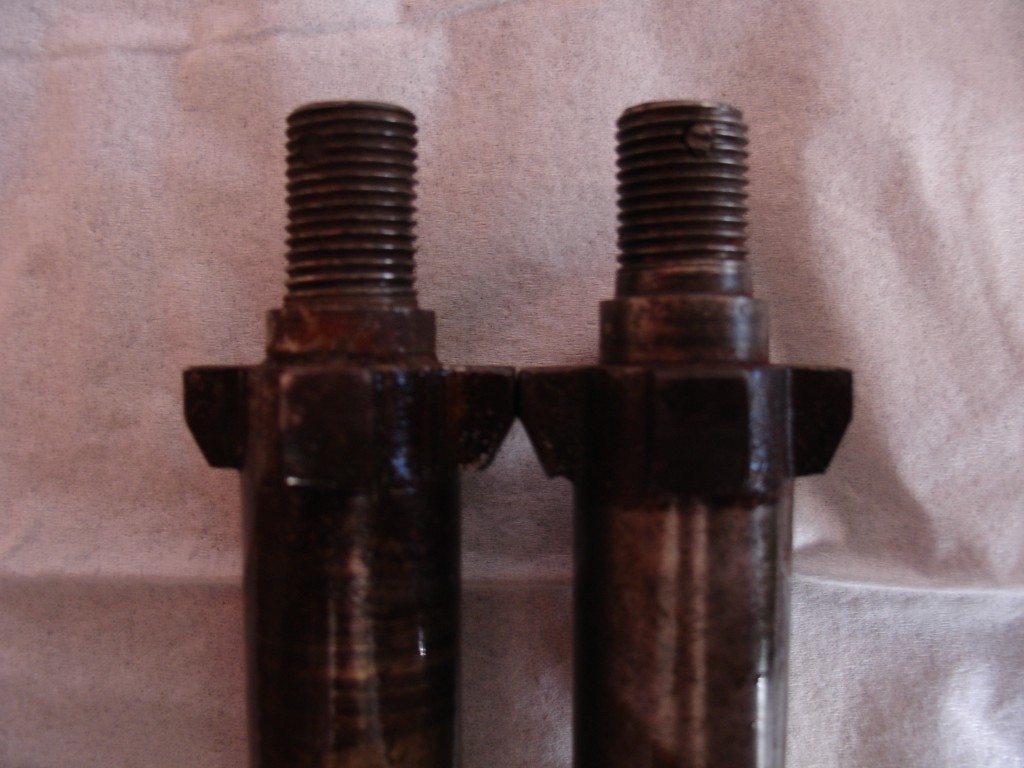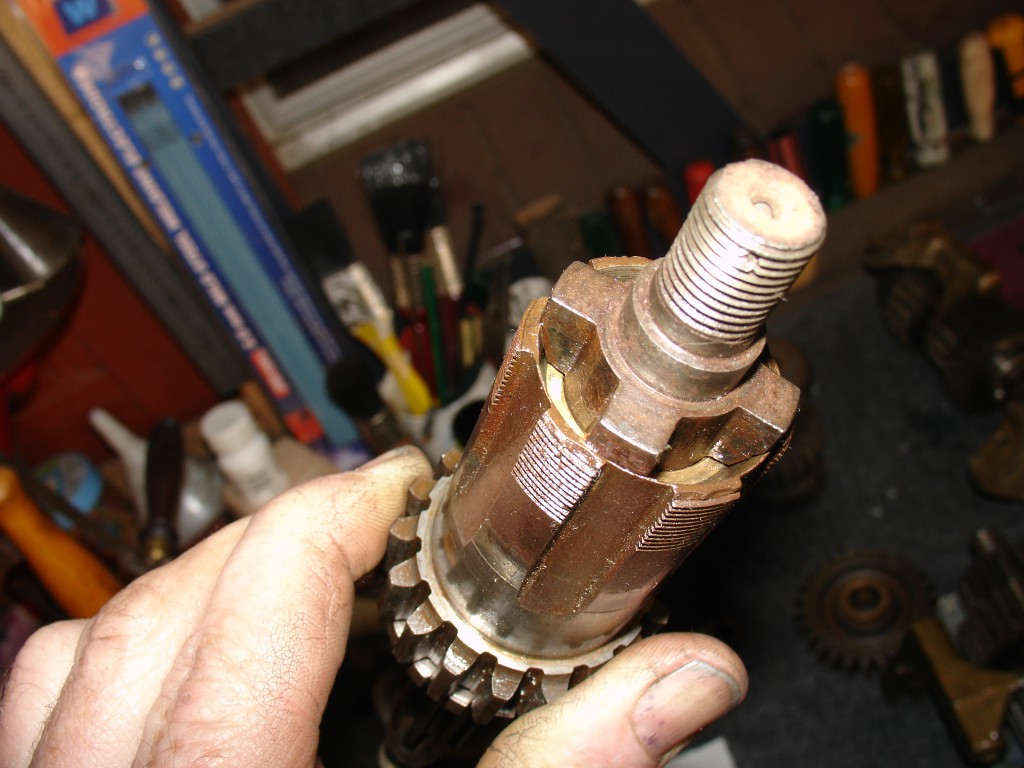More questions and comparisons
As I noted yesterday, there are some strange things going on in these two gearboxes…
I’ll start with the main-shaft again and the differences in the sleeve-gear and the shafts themselves: The picture above is of the ends of the sleeves at the clutch end, without the shaft in situ, and shows the differences in the length of the sleeves, the angle of the chamfer (for want of a better word) and that the bearings themselves are actually the same length! Notice also that the thread on the later one is a bit chipped, but not enough to be a danger or to diminish its function. Yet.
Side-by-side, they are obviously different in length. The shorter one is almost exactly 3 inches long from the back of the gear, the longer one (earlier, 1939) measures nearly 3 3/32” – 3.150”. Also worth a note is the narrow part of the gear on the right…the ‘wear’ on the teeth corresponds exactly with the gaps between the longer cut gear, suggesting that the gear that meshes with it, was allowed, somehow, to ‘wander’ to the right, encroaching on the slimmer gear and wearing it away! This must have gone on for some time and doesn’t seem otherwise to have done any damage, except to round off the corners of the other gear marginally!
Here is the other end of the shafts, showing the difference in the depth of the web, the length of the thread and also the angles involved…
The deeper-seated 5-prefix (1939) sleeve and shaft: notice that the shaft doesn’t actually seat on, or reach the bearing, though it does touch the ‘sides’ of the chamfer…
The shallower 10-prefix (post-war) sleeve and shaft: notice that the shaft doesn’t actually seat on, or reach the bearing, either…though it doesn’t seem to have had much contact with the ‘sides’ of the chamfer! Notice also that both cross pins are still in the ends of the shaft and check out the state of the threads!!
Another ponderable for the technical anal-ysts amongst us is the comparison of the two cam-plates. Ostensibly identical (apart from the location of the ‘neutral’ ‘dent’ on the outside, at the top -12:05 – on the early one and at 9 o’clock on the later one) and apparently both BK80/2…a bit of a surprise, as they were only fitted to GTP, MOV, MAC and OHC models in 1934, 1935 and 1936! Can’t quite work it out!
On the top one (1939, 5-) the stamp on the ratchet and the spark-eroded (!) arrow on the cam-plate are just visible at 12 0‘clock of the join. The bottom ratchet has an oblique arrow (only barely visible) and the plate has no other markings, either side. Note how the contours on the early plate are sharper, more ‘notchy’ than the later, smoother curves.
©peter gouws 2012







